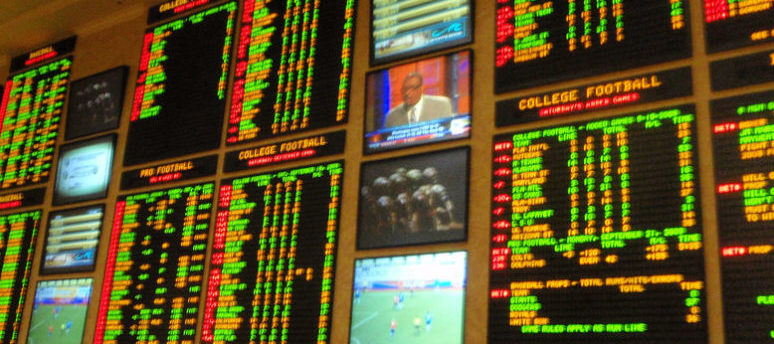How accurate are oddsmakers at setting totals as the size of the total rises? Our theory coming in was that as totals get bigger, oddsmaker accuracy would get worse.
After all, you would expect a greater margin for error with more points scored. We went back through hundreds of totals and ran the standard deviation on the over/under margin for each game.
Oddsmakers Accuracy With Over/Under Margins Based on the Actual Total
The results tell us how much variation we can expect at a given total based on past history.
You’ll find the results and our analysis of this research below. It includes the NFL, college football, the NBA, and college basketball.
First, we’ll do our best to explain some of the terms we are using and exactly what they mean.
Explanation of Terms
The standard deviation for the over/under margin is taken from hundreds of games at each total.
For example, on a game with a total of 198 that ends with a final score of 98-86, the over/under margin would be 14. This tells us how far off the oddsmakers were at predicting the number of points scored.
The standard deviation in the tables below has been run on the over/under margins of thousands of individual games at each total for each sport.
The final standard deviation number represents about how much variation can be expected between on a game with that posted total. The lower the variation, the more accurate oddsmakers are at predicting at that spread.
You may find this explanation of standard deviation easier to understand:
As a slightly more complicated real-life example, the average height for adult men in the United States is about 70 inches, with a standard deviation of around 3 inches. This means that most men (about 68 percent, assuming anormal distribution) have a height within 3 inches of the mean (67–73 inches) – one standard deviation – and almost all men (about 95%) have a height within 6 inches of the mean (64–76 inches) – two standard deviations. If the standard deviation were zero, then all men would be exactly 70 inches tall. If the standard deviation were 20 inches, then men would have much more variable heights, with a typical range of about 50–90 inches. Three standard deviations account for 99.7 percent of the sample population being studied, assuming the distribution is normal (bell-shaped). Wikipedia – Standard Deviation
At the bottom of each table, you will see a correlation number. The correlation tells us how strong the spread is at determining the standard deviation.
A correlation is expressed as a number between -1 and 1. This is also called the correlation coefficient.
The closer the number is to 1, the stronger (more accurate) the positive correlation. The closer the number to -1, the stronger the negative relationship.
As a correlation draw closer to zero, it shows a lack of causation in the data. In our samples, we expect a positive correlation. We believe as totals get bigger, so should the standard deviation.
Let’s see if our theory plays out in the actual data.
Total Variability – Football & Basketball Standard Deviation Charts
We are displaying the results of our research in the form of scatter charts. This makes it much easier for you to visualize the data.
In terms of a strong correlation, you would want to see the data points clustered in a rising line. The more spread out the data points, the weaker the correlation.
Standard Deviation in NBA Games (Totals)
Correlation: 0.33
There is only a slight positive correlation between bigger totals and variance in final total points. While it’s not a statistically significant, all is not lost. we do see, however, is a very significant difference between games with totals over 200 and those under. The variance in games with a total over 200 is nearly a full point more than ones under 200. This isn’t enough to tell us that we need to avoid totals over 200 altogether, but it does say that lower totals are slightly more predictable that bigger ones.
There is a very significant difference between games with totals over 200 and those under. The variance in games with a total over 200 is nearly a full point more than ones under 200.
This isn’t enough to tell us that we need to avoid totals over 200 altogether, but it does say that lower totals are slightly more predictable than bigger ones.
Standard Deviation in College Basketball Games (Totals)
Correlation: 0.66
We found the strongest relationship between bigger totals and more variance in final total points in college basketball. There are some lower numbers that look as if they have high variance. This is sometimes due to a smaller sample size. By and large college hoops games follow exactly what we expected. The totals become less predictable as the total gets bigger.
There are some lower numbers that look as if they have high variance. This is sometimes due to a smaller sample size.
By and large college hoops games follow exactly what we expected. The totals become less predictable as the total gets bigger.
Standard Deviation in NFL Games (Totals)
Correlation: -0.02
There is no significant correlation in the NFL. We find this happens in just about everything pertaining to the NFL in terms of variance.
There isn’t much due to extremely tight lines on totals. The good new is that, because there is less variance in the NFL, it is a great league to play teasers on.
Standard Deviation in College Football Games (Totals)
Correlation: 0.60
There is also a pretty solid association between rising college football totals and the variance of final point totals. This is particularly evident in totals over 54 points. Here the variance is a point and a half more than in totals under 54 points.
This follows the logic that when more points are expected to be scored in a game, it is harder to predict the final total number of points. This isn’t true in all sports, but college football has such a wide range of totals, it is not surprising to see these numbers.
Conclusions
The biggest take away from this data is that the college game is much more unpredictable than pro sports.
That’s not mind-blowing information – it’s what you would expect – but it’s nice to see it reinforced in the numbers.
The NFL, as expected, is the most predictable of all of the leagues we examined. This just goes to show how good oddsmakers have gotten at setting totals in NFL games.
How can we use this information to our advantage? First and foremost, the bigger the standard deviation (variance) a number has, the less predictable it is.
This means you actually have a bigger advantage over the oddsmakers a the highest numbers. This can be useful when it comes to teasers, where you want the oddsmakers to be as accurate as possible.
More on Standard Deviation in Football & Basketball


